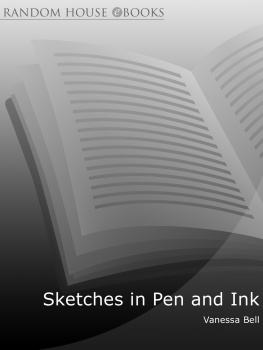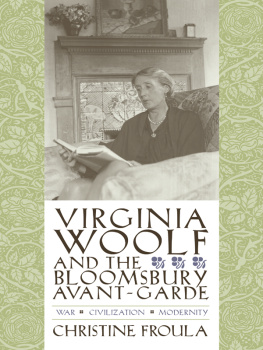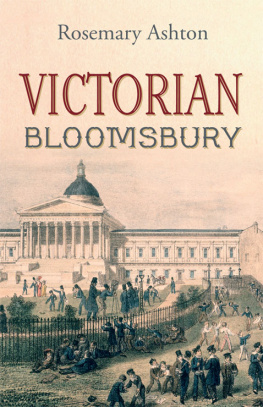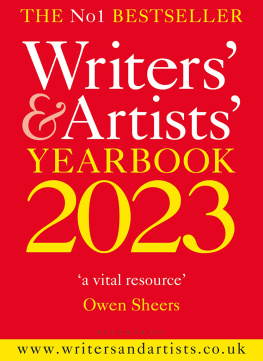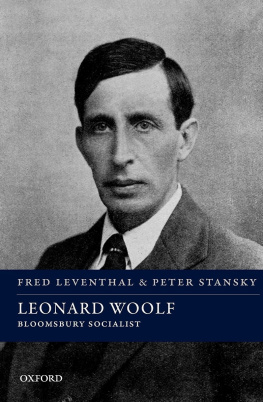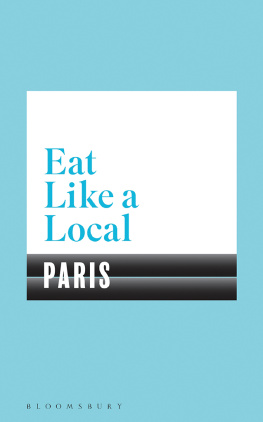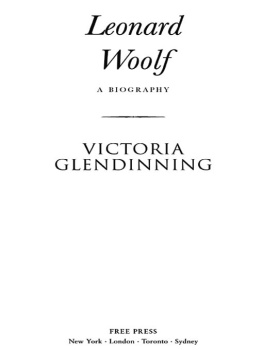Bloomsbury and France: Art and Friends
Bloomsbury and France
Art and Friends
MARY ANN CAWS AND SARAH BIRD WRIGHT
With a Preface by Michael Holroyd

Oxford New York
Athens Auckland Bangkok Bogot Buenos Aires Calcutta
Cape Town Chennai Dar es Salaam Delhi Florence Hong Kong Istanbul
Karachi Kuala Lumpur Madrid Melbourne Mexico City Mumbai Nairobi
Paris So Paulo Singapore Taipei Tokyo Toronto Warsaw
and associated companies in
Berlin Ibadan
Copyright 1999 Mary Ann Caws and Sarah Bird Wright
Published by Oxford University Press, Inc.
198 Madison Avenue, New York, New York 10016
Oxford is a registered trademark of Oxford University Press, Inc.
All rights reserved. No part of this publication may be reproduced,
stored in a retrieval system, or transmitted in any form or by any means,
electronic, mechanical, photocopying, recording, or otherwise,
without the prior permission of Oxford University Press.
Library of Congress Cataloging-in-Publication Data
Caws, Mary Ann.
Bloomsbury and France : art and friends / Mary Ann Caws,
Sarah Bird Wright.
p. cm. Includes bibliographical references and index.
ISBN 0-19-511752-2 1. Bloomsbury group.
2. Great BritainRelationsFrance. 3. FranceRealtionsGreat Britain.
4. ArtistsGreat BritainBiography. I. Wright, Sarah Bird. II. Title.
NX543.C38 1999 820.900912dc21 98-54638
1 3 5 7 9 8 6 4 2
Printed in the United States of America
on acid-free paper
To Frances Partridge
Contents
Preface by Michael Holroyd
No reader of the Bloomsbury Group house journal, The Charleston Magazine, can have failed to notice how, during the 1990s, France began to invade its pages. Contributions ranged from investigations into Bloomsburys appearances at the Entretiens de Pontigny in the 1920s, to reviews of Simon Bussys paintings, including a major exhibition of his work at Beauvais; from articles reminding us of Bloomsburys championing of Czanne and involvement with Gide, to Roger and Margery Frys experiences working for the Quaker War Victims Relief Fund in the districts of Marne and the Meuse, and a scholarly account of various ways in which to prepare boeuf-en-daube.
Much of our French culture began with gastronomic experience,
But there was little cultural appropriation by Bloomsbury. Lytton Strachey, author of Landmarks in French Literature, despite his encyclopaedic knowledge of France, was never incautious enough to be heard speaking its language. His sister Dorothy, who lived much of her life in the south of France with her husband Simon Bussy and who translated the writings of her friend Andr Gide, also remained on all occasions an austere and quintessential Strachey. It is true that Clive Bell, his social ambitions over-extended perhaps by his love of Proust, strove to imitate French manners, but he demonstrated all the more glaringly his damned Englishness. His wife, Vanessa Bell, had no heady social ambitions. With her lover and fellow-painter Duncan Grant, she reconstituted Charleston, their house under the Sussex Downs, at Cassis and made there a tiny French colony of Bloomsbury. But she was on intimate terms with few painters in France and went there largely for seclusion. What she enjoyed when reaching these familiar yet foreign surroundings was an evaporation of responsibilities in the gorgeous heat, and the gaining of another light in which to see thingswhat her daughter was to describe as the dazzling purity of the light, the mixture of the blue, ochre and silver in the landscape accentuated by the black trunks of vine and olive.
Though a few members of Bloomsbury went further for their inspirationE. M. Forster to Italy, Gerald Brenan to Spain, and Maynard Keynes in some degree to the United Statesmost of them believed that Britain would gain from an injection of French culture, and to an extent exemplified this belief in their work. But with the exception of Virginia Woolfs novels, France itself until recently showed little interest in Bloomsbury. Frances Partridge remembers going with Raymond Mortimer to the British Embassy in Paris in the 1970s, and seeing the French Arts Minister, a very chic lady, put on an expression of utter blankness when the Bloomsbury Group was mentioned.
But all this has been changing in the last two decades. In the early 1980s a splendid two-volume Life of Lytton Strachey appearedBiographie et Critique dun Critique et Biographe, by the French scholar Gabriel Merle; and in the early 1990s all Bloomsbury was surveyed by Jean Blot in his Histoire dune Sensibilit Artistique et Politique Anglaise which gave a generous evaluation of the Bloomsbury writersE. M. Forster, Roger Fry, Maynard Keynes, Lytton Strachey, Leonard and Virginia Woolf. During these years a number of scholarly essays appeared on Bloomsbury publications in tudes Anglaises. Then, in the mid-1990s, Christopher Hamptons Anglo-French film Carrington won two prizes at the Cannes Film Festival and brought Bloomsbury lives to a wider French audience. This process, revealing ever more clearly the French spirit at the heart of Bloomsbury, now has a look of inevitability to it, and is brought to a climax by Mary Ann Caws and Sarah Bird Wrights magnificently-illustrated and exhaustive study.
It was France, the authors shrewdly observe, that prevented Bloomsbury from remaining insular. Bloomsbury and France: Art and Friends is partly a collage of writings by and about the Bloomsbury Group, partly a conversation carried on through their published and hitherto unpublished letters. By providing a francophile dimension to the life and work of a group that too often has been portrayed as merely inward-looking, this book will open up Bloomsbury to fresh insights. In this respect it is essential reading.
Notes
Angelica Garnett, The French Connection. Part 3, The Charleston Magazine, Issue 8 (Winter/Spring 199394): 5, col. 1.
Angelica Garnett, The French Connection. Part 1, The Charleston Magazine, Issue 6 (Winter/Spring 199293): 9, col. 1.
Ibid., p. 10, col. 2.
Angelica Garnett, The French Connection. Part 2, The Charleston Magazine, Issue 7 (Summer/Autumn 1993): 13, col. 2.
Lytton Strachey to James Strachey, 27 September 1914. Quoted in Michael Holroyd, Lytton Strachey. The New Biography (New York: Farrar, Straus and Giroux, 1994), p. 307.
Acknowledgments
We are very grateful to many people who have helped, directly and indirectly, with this project. First, we want to thank most warmly Frances Partridge, Angelica Garnett, Henrietta Garnett, Alice Mauron, Anne Olivier Bell, and Annabel Cole for their warm welcome and helpfulness over these many years. Without their counsel, their encouragement, their attention, and their multiple, renewed, and generous permissions, this book would not have reached completion. The manuscript was immeasurably improved by their readings; the faults are ours alone. In permitting the reproduction of pictures from her own photograph albums and those of Lytton Strachey and Dora Carrington, and in writing a memoir of the relationship she and Ralph Partridge continued to have with France after the death of Carrington, Frances Partridge surpassed even herself in generosityan enormously difficult feat.
We want to express our gratitude to the late George Rylands for his kindness and encouragement, to Germaine Taillade for her help with the documents of Andr Derain, to Betty Taber for her interest, and particularly to the late Quentin Bell for his initial and unfailing enthusiasm over the book, and for reading many preliminary drafts.
Next page

